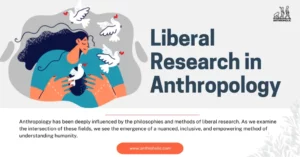AI Answer Evaluation Platform Live Now. Try Free Answer Evaluation Now
Homo Habilis (The Tool Maker)
In the vast story of human evolution, one of the most defining moments wasn’t just when our ancestors walked upright – it was when they picked up a rock and shaped it with purpose. That moment of innovation is closely tied to Homo habilis, the earliest known member of our genus and the first hominin credited with making and using tools.

Nicknamed “The Handy Man,” Homo habilis lived in Africa about 2.4 to 1.4 million years ago, bridging the gap between the more ape-like Australopithecus and more advanced human ancestors like Homo erectus. The fossils of H. habilis, often found near simple stone tools, sparked a major shift in how scientists understood the development of human intelligence and culture.
But Homo habilis was more than just a toolmaker – it was a species in transition, showing early signs of brain expansion, behavioral complexity, and adaptability to shifting environments.
Who Was Homo habilis?
Homo habilis was first discovered in the early 1960s by the renowned paleoanthropologist Louis Leakey and his team at Olduvai Gorge in Tanzania. The species was officially named in 1964, and the Latin name translates to “handy man” – a nod to its association with stone tools.
Time Period and Geographic Range
Homo habilis lived approximately 2.4 to 1.4 million years ago, during the early Pleistocene epoch. Fossils attributed to this species have been discovered in East and Southern Africa, notably in sites like:
- Olduvai Gorge (Tanzania)
- Koobi Fora (Kenya)
- Sterkfontein and Swartkrans (South Africa)
It was the earliest species to be classified in the Homo genus, marking the beginning of the lineage that would eventually lead to modern humans.
Physical Characteristics and Brain Expansion
Homo habilis looked quite different from modern humans but showed distinct evolutionary progress from earlier hominins.
Skull and Brain Size
- Brain volume: 510-600 cm³, larger than Australopithecus (around 400-500 cm³), but smaller than Homo erectus
- Smaller brow ridges and flatter face compared to predecessors
- Less prognathism (jaw projection)
This brain expansion suggests the early stages of cognitive growth – possibly linked to increased social complexity, tool use, and environmental adaptability.
Body and Locomotion
- Average height: ~4 feet 3 inches (130 cm)
- Weight: ~32 kg (70 lbs)
- Relatively long arms and short legs – suggesting a mix of tree-climbing and bipedal locomotion
- Curved finger bones: Some traits retained from arboreal ancestors
This mixture of traits shows that Homo habilis was still transitioning from the more ape-like anatomy of Australopithecus toward the fully bipedal, terrestrial life of later Homo species.
The Tool-Making Revolution
The hallmark of Homo habilis – and the reason it earned its name – is its association with the Oldowan tool industry, the earliest known stone tool culture.
The Oldowan Tools
- Typically made by striking flakes off a stone core to produce sharp edges
- Used for cutting meat, breaking bones, and processing plant materials
- Found in direct association with H. habilis fossils in places like Olduvai Gorge
These tools may seem primitive today, but they represented a major leap in behavior. They show that early humans could:
- Plan and anticipate needs
- Learn and teach tool-making techniques
- Modify their environment to improve survival
Tool use likely gave Homo habilis access to new food sources (like bone marrow and meat) and may have shaped social cooperation, such as food sharing and group foraging.
Lifestyle and Environment
Homo habilis lived in a dynamic and changing African landscape. The early Pleistocene was a time of environmental flux – with alternating wet and dry periods that created a mosaic of forests, grasslands, and savannas.
Diet and Scavenging Behavior
Evidence suggests H. habilis had a flexible, omnivorous diet, including:
- Meat from scavenged carcasses
- Soft plant foods, fruits, roots, and possibly nuts
- Bone marrow, accessed using stone tools
Cut marks on animal bones at sites like Olduvai Gorge indicate that H. habilis used tools to remove meat – possibly scavenging rather than hunting, competing with other carnivores like big cats and hyenas.
Their ability to exploit various food sources may have helped them survive in unstable climates, marking the beginning of dietary adaptability seen in later Homo species.
Social Behavior and Mobility
While direct evidence is scarce, many anthropologists believe that Homo habilis:
- Lived in small social groups, possibly for protection and cooperative foraging
- Used basic shelters or naturally sheltered areas
- Had limited migration ranges, though some mobility was likely necessary for finding resources
There’s also debate over vocal abilities – while full speech is unlikely, some primitive form of communication (gestural or vocal) may have been developing, laying the groundwork for language.
Evolutionary Significance
Homo habilis represents one of the most critical turning points in human evolution – the emergence of tool use and expanded brain function in a hominin species.
Transitional Role
Anthropologists often view H. habilis as a “transitional” species between:
- Australopithecus (smaller brains, no tools)
- Homo erectus (larger brains, advanced tools, fire use)
This makes H. habilis a central figure in the story of human development – a species walking the line between primitive and modern behaviors.
Classification Controversy
There’s still debate in the scientific community about whether Homo habilis deserves its own species or should be split into more than one group. Some researchers argue:
- Fossil variation may indicate multiple species, not just one (H. rudolfensis is often suggested)
- Others contend the wide variation fits within a single species due to sexual dimorphism or regional diversity
Regardless of the outcome, these debates highlight how complex and nuanced human evolution really is – and how Homo habilis continues to challenge our understanding.
The Legacy of Homo Habilis in Anthropological Thought
When Louis Leakey and colleagues announced the discovery of Homo habilis, it redefined what it meant to be human. Until then, the use of tools was thought to be the hallmark of more advanced species like Homo erectus. Finding tools alongside a smaller-brained hominin forced scientists to reconsider the relationship between brain size, behavior, and technology.
Today, H. habilis is seen as a symbol of human ingenuity in its earliest form. Its existence proves that intelligence isn’t just about size – it’s about adaptability, creativity, and the ability to shape the world with intention.
The First Hands That Shaped Our Future
Homo habilis may not have built fires or painted caves, but it took one of the boldest steps in human history – shaping the first tools. That act of intention, of creating something useful from raw materials, was a spark that set our species on a unique path.
As a species, H. habilis was still very much in transition – not quite ape, not fully human. Yet in its bones and the chipped stones it left behind, we see the beginning of something profound: the rise of technology, the use of intelligence to adapt, and the early foundations of culture and society.
For anthropologists, Homo habilis is more than just a fossil record. It’s a reminder that the roots of human success lie in creativity, not just strength. By understanding this humble toolmaker, we gain a clearer sense of how far we’ve come – and the quiet genius that helped start it all.
References
- Homo habilis – The Smithsonian’s Human Origins Program
An overview of H. habilis, including fossil discoveries and interpretations of its dietary habits.
https://humanorigins.si.edu/evidence/human-fossils/species/homo-habilis - Homo habilis – Britannica
Details on H. habilis, its fossil record, and associated findings.
https://www.britannica.com/topic/Homo-habilis - Homo habilis – The Australian Museum
Information on H. habilis and its place in the hominin lineage.
https://australian.museum/learn/science/human-evolution/homo-habilis/ - Homo rudolfensis – The Smithsonian’s Human Origins Program
Details on H. rudolfensis, a species closely related to H. habilis.
https://humanorigins.si.edu/evidence/human-fossils/species/homo-rudolfensis - Olduvai Gorge – Britannica
Information on the Olduvai Gorge, a key site for H. habilis fossils.
https://www.britannica.com/place/Olduvai-Gorge - The Old Man of Olduvai Gorge – Smithsonian Magazine
An article discussing the discovery and significance of H. habilis fossils.
https://www.smithsonianmag.com/history/the-old-man-of-olduvai-gorge-69246530/ - Homo habilis, rudolfensis A. sediba – Answers Research Journal
A study exploring the classification and characteristics of early Homo species.
https://answersresearchjournal.org/human-holobaramin/




